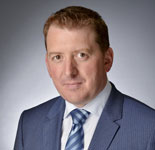Customer Experience Q&A With Andrew Murphy Of John Lewis
I get just as excited as the next analyst about the latest and greatest startup. But you know what? There’s something extra cool about a brand that’s been around since 1864, and yet runs neck-and-neck with Amazon in our UK customer experience rankings.
That’s why we invited Andrew Murphy, retail director of John Lewis Department Stores, to speak at Forrester’s Forum For Customer Experience Professionals EMEA in London on November 17th and 18th, 2014.
As we near the event, Andrew graciously answered some of our most pressing questions about the why and how of John Lewis’ famous service experience — which is all the more impressive given its brand promise: “Never Knowingly Undersold.” (Translation: Great customer experience doesn’t have to mean high prices.)
I hope you enjoy his responses, and I look forward to seeing some of you in London!

Q: When did John Lewis first begin focusing on customer experience? Why?
A: John Lewis has had a long-term focus on what we would previously have termed “customer service,” dating back to our founding principles from 1864. More recently, the advent of omnichannel retailing with all of its inherent demands has caused us to revisit these principles and redouble our efforts to provide a truly world-class customer experience.
Mainly this has focused on aligning the service standards of the other businesses that we rely on to deliver service to our customers with our own. We've raised the bar on service delivery across all of our third-party service providers and are increasingly proactive in penalizing product suppliers that don't meet product, delivery, or communication standards.
We have also strengthened our product returns policy by removing as many caveats as possible. Simultaneously, we’ve invested more (£4 million this year alone) in our Goodwill policy, which empowers frontline staff to independently sanction up to £50 as an ex gratia payment to a dissatisfied customer.
Q: How do you determine which aspects of customer experience you must try to excel at?
A: We use a fairly standard closed-loop system of insight and analysis, which feeds a cross-functional board-level prioritization process. The prioritization process is run out of our customer experience team and presented to a monthly meeting of a subgroup of the board called the customer experience executive board.
Typically, the proposals that get funded are those that either resolve existing issues that are causing enough customer stress to be highly visible in exit surveys, social media, and management complaints or extend and improve our customer proposition in a way that we regard as being strategically important versus our key competitors.
Q: How do you measure the success of your customer experience improvement efforts? And have you seen progress over time?
We measure customer NPS by channel, touchpoint, and journey and at enterprise level. We have progressed on all measures, although it hasn't always been easy to achieve or consistently sustain with customers' expectations evolving almost constantly and the increasing complexity of our business network (suppliers, third-party providers, etc.) throwing up surprises and challenges with great regularity.
Q: Where do you think your industry will be with regard to customer experience quality in five years? Will it be a race to the top, on average about the same, big winners and big losers, or . . . ?
There will be two types of nonfood retailer, those involved in a customer experience “arms race” continually deploying new and creative proposition enhancements (both experiential and service-related), most of which will be technology-based. And then there will be “transactors,” involved in a much more straightforward exchange of goods for cash with very limited experiential aspects offered, a basic and inflexible but reliable service proposition, and all done at lowest possible cost.
